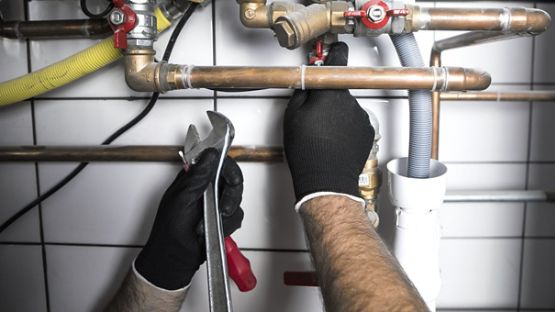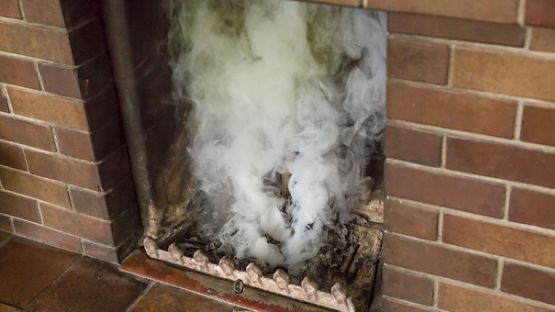As the cold winter months settle in across Canada, many homeowners, tenants and condo owners face rising energy bills as they turn up their heating systems to keep warm.
Thankfully, with a few simple changes and thoughtful energy-saving tips, you can keep your home comfortable without breaking the bank. In this article, we’ll share practical winter energy-saving tips to help you save money, conserve energy, and increase your home's energy efficiency during the colder months.
Key takeaways
- Seal air leaks and improve insulation: Seal gaps around windows, doors and vents to prevent heat loss and cold air from entering your home. This simple step can significantly reduce your energy bill.
Upgrade to a smart or programmable thermostat: Set your thermostat to adjust the temperature based on your schedule. A thermostat upgrade can help you save money without compromising comfort.
Use of natural heat and light: Open curtains during the day to let the warmth of sunny days naturally heat your home, and close them at night to retain warm air. Using natural heat and light reduces the demand on your heat system and lowers energy bills.
Why winter energy efficiency matters
Canada’s winters can be long and harsh, making heating your home a significant portion of your monthly energy bills. However, using the right strategies, you can reduce your energy consumption and maintain a warm, comfortable home. By focusing on energy savings, you not only reduce your heating bill but also do your part in lowering your carbon footprint.
These energy-saving tips can work for all types of homes, whether you own your house, rent an apartment, or live in a condo. With a few minor adjustments, you can make a big difference in your energy usage and comfort.
Insulate your home for energy savings
Proper insulation is one of the most effective ways to reduce heat loss and keep warm air inside your home. Insulating your attic, walls, and floors helps maintain a steady temperature throughout your living space.
Consider these key tips for improving insulation
- Add or upgrade existing insulation in your attic, as heat rises and can escape through poorly insulated ceiling spaces.
- Install insulated curtains or thermal blinds to prevent cold windows from letting heat escape.
- Use foam gaskets behind electrical outlets on exterior walls to avoid hidden air leakage.
Even minor improvements to your home's insulation can lead to significant energy savings and reduced heating costs. If you live in a condo, focus on insulating electrical outlets and adding draft stoppers where air leaks are most common.
Upgrade your thermostat for better control
If your home is empty for most of the day, a programmable thermostat can help you lower temperatures once you’re out of the house and rise again before you return. Dropping the temperature by a few degrees eight hours a day can yield considerable savings. Just make sure to set the temperature up 30 to 45 minutes before you return so you don’t come home to a cold house.
Consider these thermostat tips
- Lower the temperature a few degrees when you’re sleeping or not at home.
- Take advantage of sunny days by programming your thermostat to reduce heating when south-facing windows naturally heat your space.
- Consider slightly lowering the temperatures for unused rooms.
Seal air leaks to stop heat loss
Air leaks are one of the primary sources of heat loss during the winter. Identifying and sealing these leaks is an essential step in boosting your home’s energy efficiency.
Where to look for air leaks
Heat can quickly escape through cracks around chimney flues or vents, in gaps between walls and floors, and around doors and windows.
- For large windows, weatherstripping or caulking around window frames is a more effective and durable solution.
- For doors, use weatherstripping on the top and sides and a silicone sweep on the bottom.
- The chimney is an often overlooked escape route for warm air. Using a chimney balloon to block the damper is a good way to minimize heat loss when the fireplace is not in use. It's crucial to consult a fireplace specialist for proper selection and installation and to always remove the balloon before lighting a fire.
With the help of a professional - sealing these air leaks can help prevent cold air from entering and warm air from escaping, making it easier to maintain a comfortable temperature and saving on heating costs for years to come.
Use ceiling fans wisely
In addition to your central heating system, using a ceiling fan in winter can help circulate warm air more effectively. Set your ceiling fan to spin clockwise at a low speed to push hot air down from the ceiling and keep the room warmer without increasing your energy use.
Optimize your heating system
Regular maintenance is essential to ensure your system operates efficiently. Consult the owner's manual for instructions on performing basic cleaning of furnaces, hot water tanks, and boilers. Hiring a professional for an annual inspection should help to ensure a more extensive cleaning and maintenance check of your heating systems.
Heating system tips
- Check your furnace filter regularly and replace it if it appears dirty. A clogged filter can cause your system to work harder, resulting in higher heating costs.
- Consider installing a heat pump, which can efficiently heat your home in winter and cool it during summer, reducing the overall energy demand.
Maximize natural light and warmth
On sunny days, make the most of natural heat by opening your curtains during the day to allow sunlight to naturally heat your home. South-facing windows are ideal for this. Close your curtains or blinds at night to retain the warm air as the day turns colder.
How to make the most of natural light
- Open curtains on sunny days to take advantage of free heat from the sun.
- Use insulated curtains in the evening to reduce heat loss through cold windows.
Using natural light and heat can reduce the demand on your heating system and save money on your heating bills.
Save on hot water with efficient habits
Heating water accounts for a significant portion of household energy consumption. By adopting water-saving habits, you can reduce energy usage and save on your monthly energy bills.
Water-saving tips
- Consider lowering the temperature of your water heater to save energy without sacrificing comfort.
- Use low-flow showerheads to reduce the amount of hot water used during showers.
- Wash clothes in cold water to save on energy costs associated with heating water for laundry.
Clean your fridge and freezer
Since they're on 24/7, your fridge and freezer tend to consume more energy than all other household appliances combined. Clogged air vents can cause them to work extra hard to keep your food chilled and consume more energy than needed. Defrost and clean regularly, and always clear the area around the vents.
Small changes lead to significant savings
Following these winter energy-saving tips can improve your home’s energy efficiency and significantly reduce your heating costs during the cold winter months. Whether you’re a homeowner or a tenant, these strategies can help you manage your energy use, conserve warm air, and save on your bills.
Implementing simple changes like improving insulation, using a programmable thermostat, and sealing air leaks can make a big difference in both comfort and your bottom line. Start with a few of these tips today, and you’ll be on your way to more efficient energy use and lower energy bills this winter.













